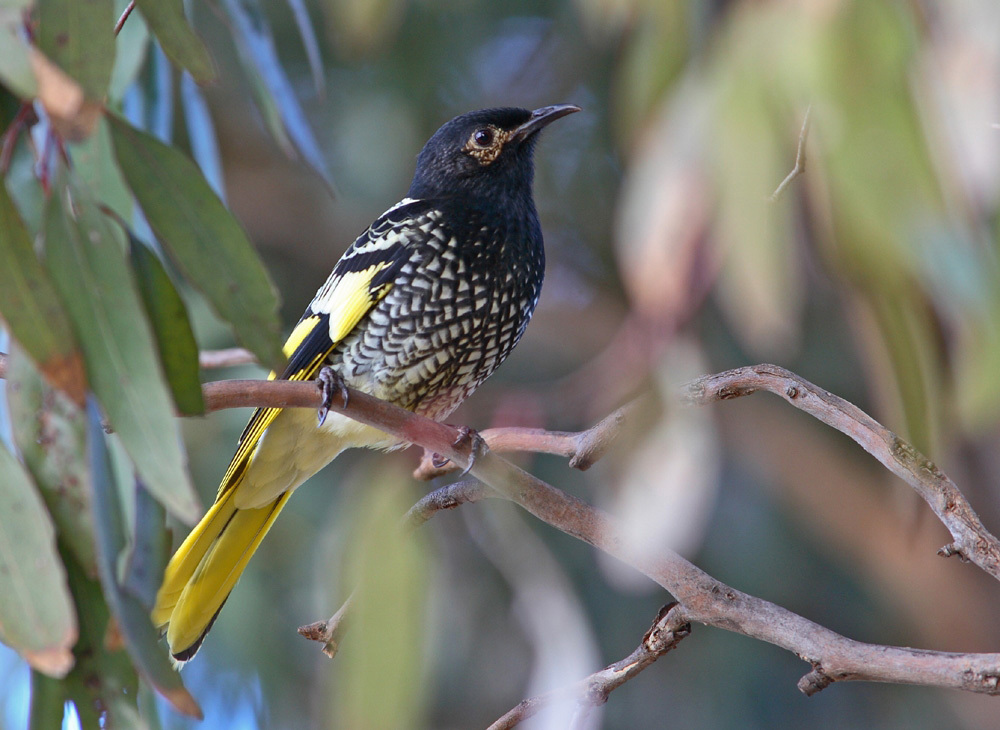These forests are critical for Regent Honeyeaters which feed from the trees’ nectar and whose population could be as low as 400 nationally (most remaining populations are found in Victoria and New South Wales), making it critically endangered.
Trust for Nature has been working with BirdLife Australia to increase the birds’ habitat in the north east, revegetating 15ha of land north of Chiltern with more than 7,000 trees and 25 different species of shrubs. Local Mugga Ironbark flowering is spasmodic and unreliable, so in consultation with Regent Honeyeater experts, we trialled planting several non-indigenous native species to increase food year round. These include Hairpin Banksia, Crimson Bottlebrush, Spotted Gum, Yellow Gum and Silky Oak. The Chiltern community has been right behind the project, including students from Chiltern Primary School who helped plant on National Tree Day.
At a community event on Threatened Species Day, BirdLife Australia’s Dean Ingwersen explained the challenges facing Regent Honeyeater conservation.
Dean said nesting success has dropped from 45 per cent in the 1990s to just 30 per cent, with predation a key factor. He said while 85 per cent of fledged young survive, there is a bottleneck at the nest and egg stage because eggs and young are being predated by goannas, Squirrel Gliders, Sugar Gliders and other birds like magpies and currawongs.
Mistletoe is also a key resource for the birds in their northern range and die-off events of mistletoes have seen Regent Honeyeaters travel to coastal areas to forage. Dean emphasised the importance of community monitoring to learn more about the speciesremarkably one radio-tracked bird did a 540km round trip to Gippsland and back.
Threatened Species Day commemorates the death of the last know Tasmanian Tiger and we were reminded that not so long ago Thylacines roamed the Chiltern area, as evidenced by the nearby Yeddonba Aboriginal rock art site. We’re doing our best to make sure the same fate doesn’t befall birds like the Regent Honeyeater.
Trust for Nature has also completed the final year of plantings to re-establish the Mountain Swainson-pea, which was previously extinct in Victoria. The project has established populations of Swainsona recta on four properties that have conservation covenants in the region.
